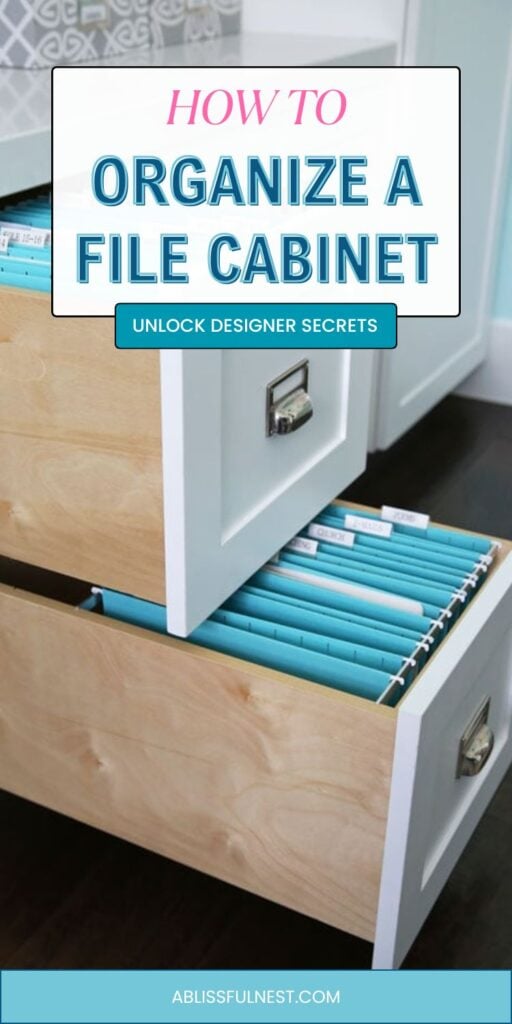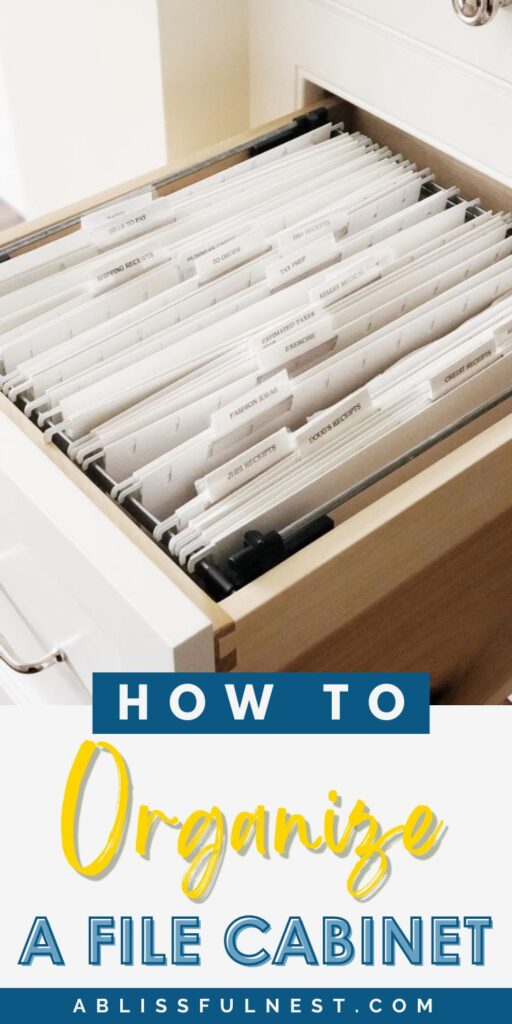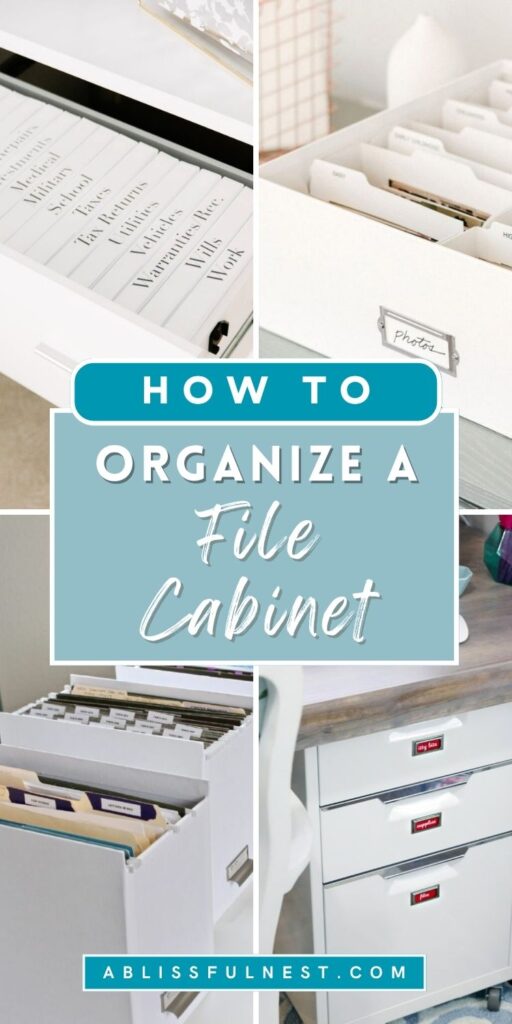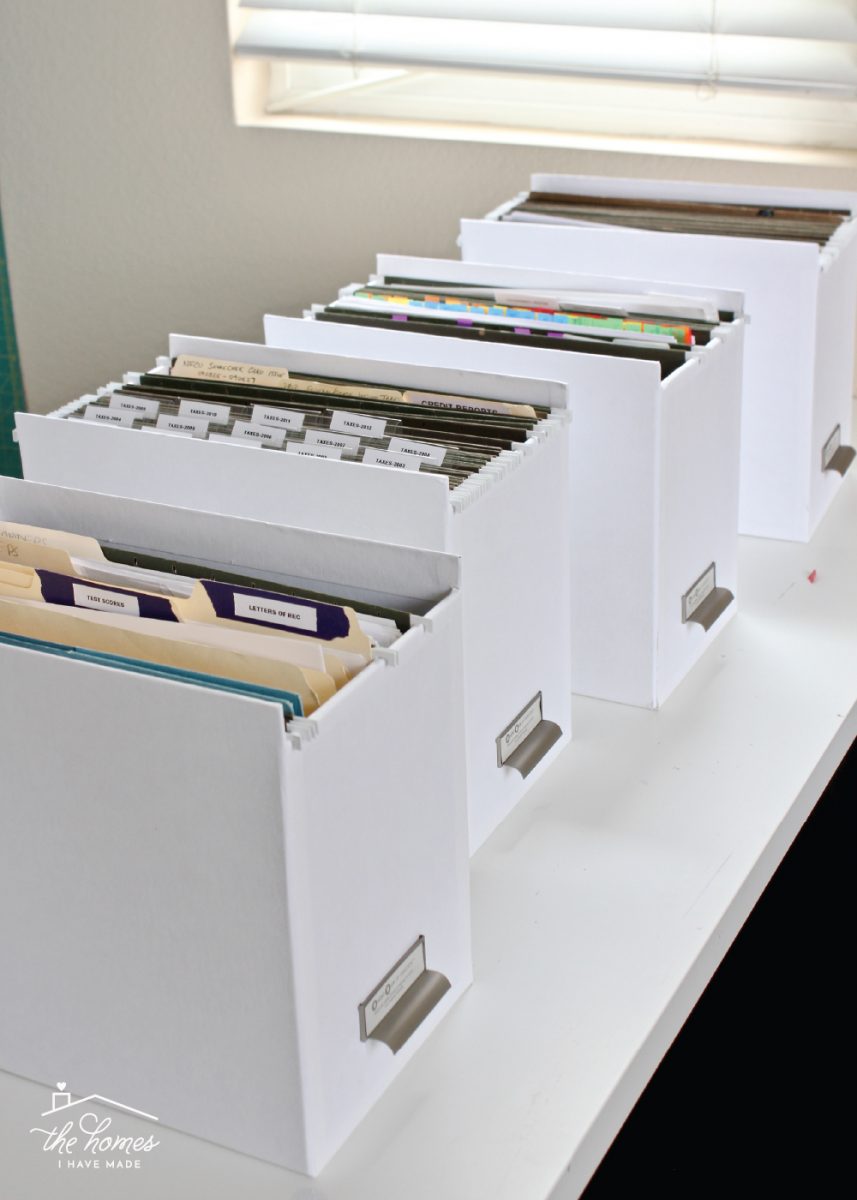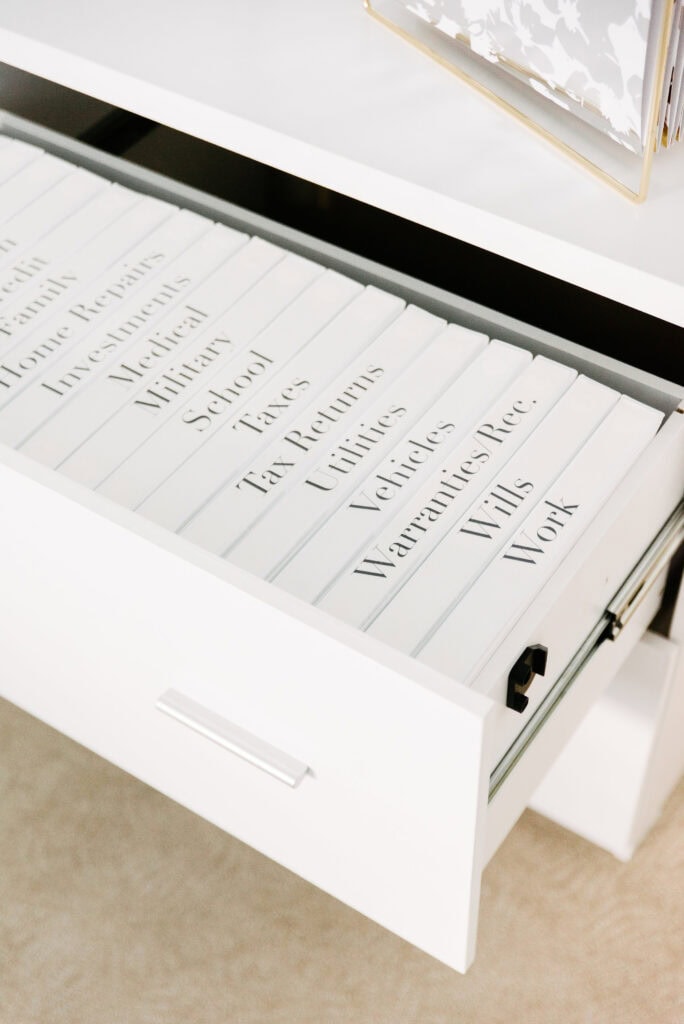Trying to figure out how to organize a file cabinet usually starts when papers pile up and important documents disappear at the worst time.
You may turn to home organization ideas, but it gets tricky when categories blur and the system never seems to stick.
It’s frustrating when tax forms, receipts, and warranties get mixed together, and you can’t find anything without digging through everything.
Labeling folders seems helpful until you have ten that say “miscellaneous” and none of them solve your problem.
You’ve probably tried to fix it with a quick sort, but it doesn’t last unless the layout really works for your routine.
Even the best intentions can fall apart when folders get too full or you forget to update them after a few busy weeks.
Many people give up and shove everything in a drawer, hoping they will organize it “someday” when there’s more time.
This post may contain affiliate links. As an Amazon Associate and a participant in other affiliate programs, I earn a commission on qualifying purchases at no additional cost to you.
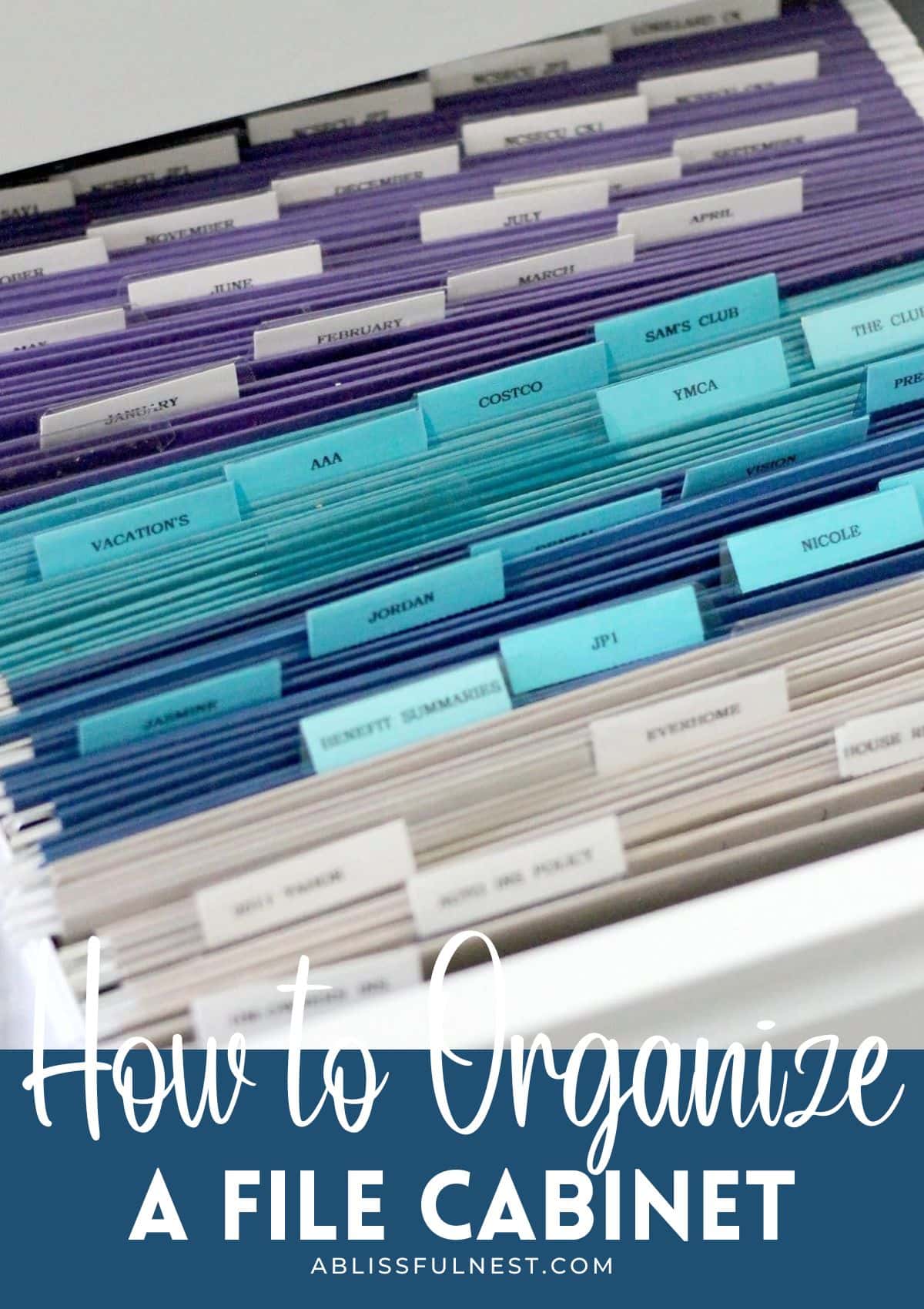
That makes it harder when you need to quickly grab a contract, school paper, or medical record.
A good filing system should save you time, not make you feel overwhelmed before you even get started.
Once your cabinet works for your lifestyle, it’s easier to keep it up and feel in control when papers come in.
Why You Need To Organize Your File Cabinet
A messy file cabinet often leads to stress and wasted time when you’re trying to track down important papers for bills, appointments, or taxes.
You may end up missing deadlines or repurchasing documents you already had, simply because they weren’t labeled or sorted correctly.
Overstuffed folders can lead to bent papers, lost records, and more frustration each time you open the drawer.
If you avoid opening the cabinet altogether, it’s likely a sign that the system inside isn’t working anymore.
A disorganized space also makes it harder for others in your home to find shared records or help keep things up to date.
Without a plan, your cabinet becomes a dumping ground instead of a helpful tool for managing household paperwork.
It’s easy to fall behind, especially when papers pile up quickly and the cabinet feels like a storage closet instead of a workspace.
You need a filing method that’s clear, simple, and easy to maintain even when life gets busy or messy.
Organizing your file cabinet can help free up mental space so you’re not constantly trying to remember where everything is.
Once your files are in order, you’ll feel more confident and less overwhelmed when new documents show up each week.
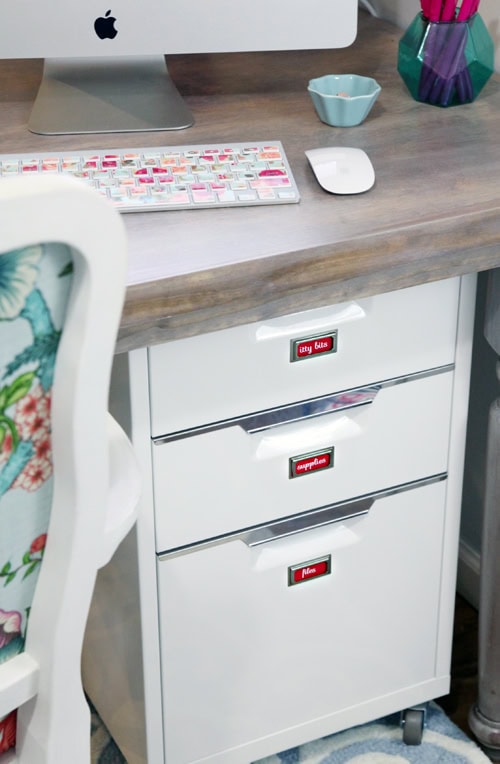
What You Need To Organize A File Cabinet
Before you start sorting papers, make sure you have the right supplies so your new system is functional, neat, and easy to maintain.
You don’t need much, but a few reliable tools will make a big difference when setting up your file storage space.
- Binder clips or rubber bands for grouping loose papers
- Hanging file folders
- Interior manila folders
- Clear or color-coded labels
- A label maker or permanent marker
- File cabinet dividers
- Trash bin or shredder for old papers
- Sticky notes for temporary labels
- A filing guide or checklist
- Small containers or baskets for supplies
Best File Cabinet Organization Products
Choosing the right filing products can help you stay organized longer and prevent your system from falling apart after just a few weeks when organizing a home office.
Here are some top picks that are durable, easy to use, and make everyday filing faster and more consistent.
Tap Photos To Shop
Would you like to save this post?
How To Organize A File Cabinet
You don’t need an advanced or expensive system to get results, just a few simple tools, a clear plan, and some practical organizing and decluttering tips.
With a few easy habits and a thoughtful setup, you can create a system that stays organized and works long-term.
Step 1: Empty the cabinet completely
Take everything out of the drawers so you can clearly see what’s there and sort it all from scratch. Go through each document carefully and toss anything that’s outdated, duplicated, irrelevant, or no longer needed in your current filing system. Starting with a clean slate is one of the smart tips to declutter your office because it helps you decide what deserves space and how much room each category truly needs now.
Step 2: Group similar papers
Sort all papers into broad categories like finances, school, home, health, or legal so they’re easier to access when needed. This is especially helpful when figuring out how to organize your bills. Once grouped, you’ll quickly notice duplicates, missing documents, or clutter that makes your cabinet harder to use. This step builds the base structure that will help your filing system stay organized for the long run.
Step 3: Label each folder clearly
Use specific folder names like “2025 Taxes” or “Car Warranty” so you can recognize contents without opening each one constantly. Clear labeling makes it faster to file incoming documents and reduces your chances of misplacing something important later on. Avoid using generic categories like “Misc” or “Other” because they invite clutter and slow you down during searches.
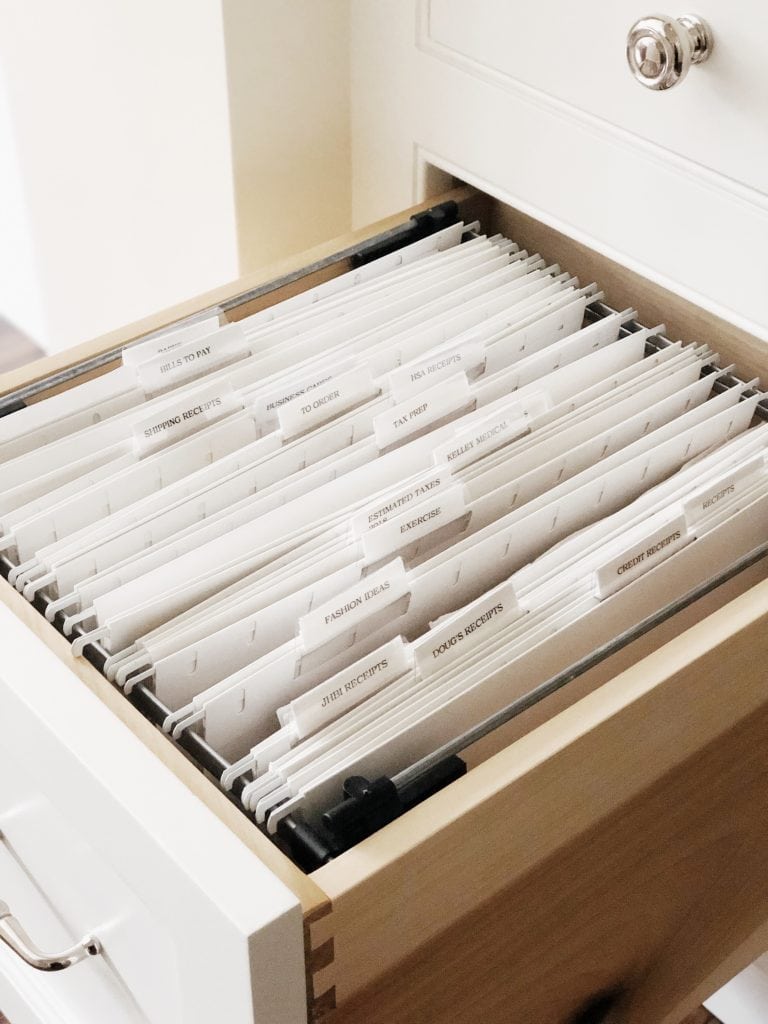
Step 4: Color-code for speed
Choose one color for each category, like blue for health or green for money, so you can navigate the cabinet faster visually. These color cues save time when you’re in a rush and trying to locate something without opening every folder individually. Color-coding also helps others understand your system if they ever need to find something in your absence.
Step 5: Use dividers or tabs
Break large groups like “Home” into smaller sections like repairs, insurance, or receipts so each folder remains manageable and relevant. Using dividers helps prevent folders from becoming overstuffed, which makes it easier to keep your cabinet clean and functional. This structure also helps you stay consistent as you continue adding papers month after month.
Step 6: Store most-used files near the front
Place frequently used folders like bills, insurance, or school forms at the front of drawers so you can reach them quickly when needed. Files that you rarely access, such as old tax returns or closed account statements, can be stored toward the back or bottom. Keeping the layout based on usage helps your daily filing routine run more smoothly and feel less like a chore.
Step 7: Create a filing habit
Choose one day each week or month to file new papers so you don’t let things pile up into messy stacks. Consistent habits help you keep clutter under control and prevent lost documents or misfiled folders from building up over time. You’ll spend less time filing overall because things never reach a point where they feel too overwhelming to fix.
Step 8: Include a temporary folder
Designate one labeled folder for unfiled or new documents that need to be sorted soon but don’t have a final spot yet. This gives you a quick place to drop things temporarily without messing up your established filing system during a busy week. Empty it every few days so it doesn’t become a second drawer of clutter hiding behind a clean exterior.
Step 9: Go digital if needed
Scan important documents like contracts or medical forms and save them to cloud storage so you have backups if anything gets lost. Digital files reduce your paper load and make it easier to access documents when traveling or away from your home office. Even just digitizing occasional files can help you transition to a lighter, less cluttered setup over time.
Step 10: Do a seasonal check-in
Set a reminder every few months to review your cabinet and remove outdated forms, expired warranties, or unneeded old receipts. This keeps the drawers from becoming overloaded and makes future sorting much easier as categories evolve with your needs. Consistent check-ins protect your system from growing into the overwhelming mess you were trying to avoid in the first place.
Frequently Asked Questions
Start with broad groups like finances, medical, or home, then break them down into subfolders for easier access and less searching. A clear folder structure helps you stay organized and find what you need without digging through a pile of mismatched papers.
Go through your cabinet at least twice a year to remove outdated papers and adjust categories as life changes. Seasonal check-ins help you stay ahead of clutter so things never spiral out of control again.
Digital filing works well if you need less paper or want to access documents from your phone, laptop, or cloud storage. Physical files are still useful for daily paperwork, quick reference, or shared home offices where multiple people need access.
Stock up on hanging folders, manila folders, labels, a good marker or label maker, and a shredder for clearing out what you no longer need. These simple tools help you build a strong filing system that lasts longer and stays easier to maintain over time.
Store personal documents like medical records, legal papers, or identification in a locked file cabinet with labeled folders. Make sure only trusted people can access the keys or codes to help protect your most important information.
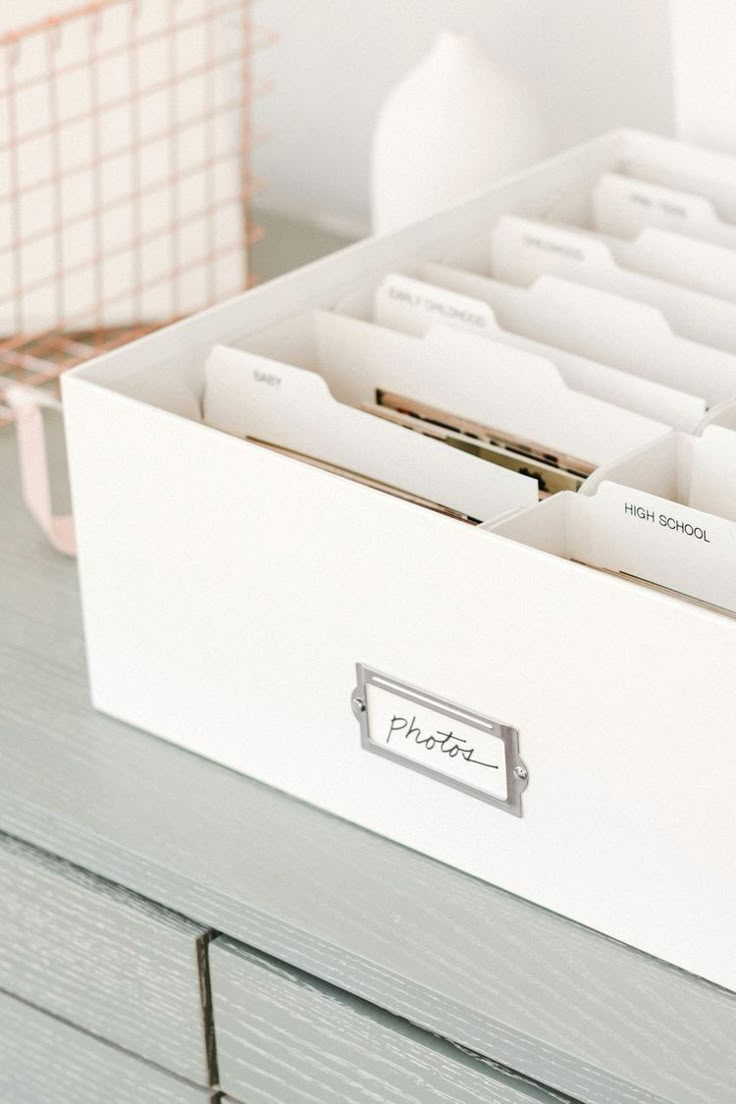
Getting your paperwork under control can feel overwhelming, but small changes can make a big difference.
Once you learn how to organize a file cabinet according to your routine, everything else starts to feel more manageable.
An organized system saves time, reduces stress, and makes daily tasks easier to handle.
You’ll avoid missing due dates, losing documents, or scrambling when papers are needed last minute.
It’s one of those small projects that pays off every single day once you finish it!


